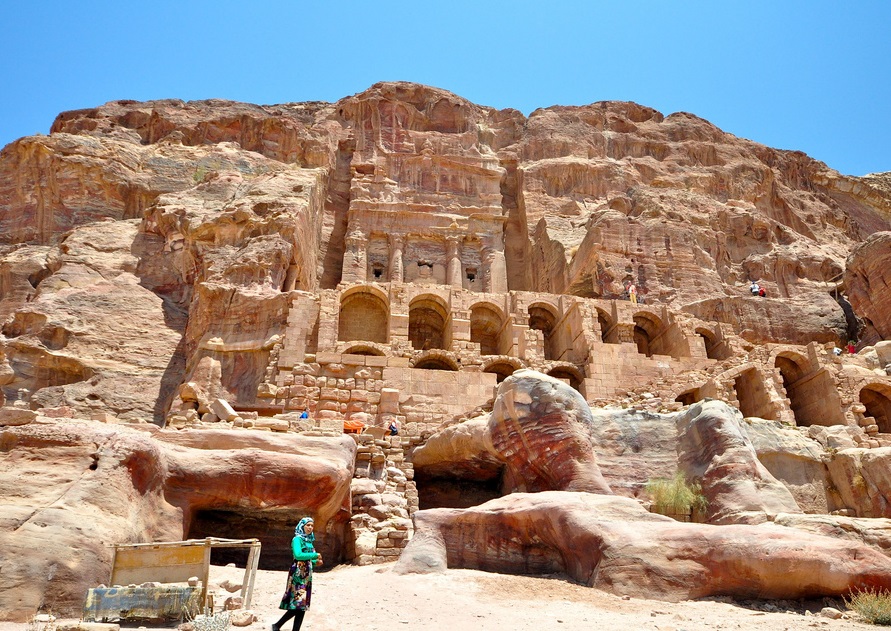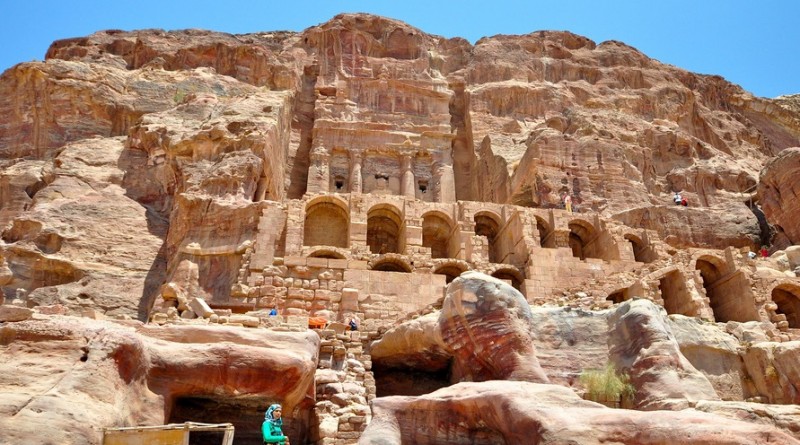Ancient Stone City Petra
 The rose-red ancient stone city Petra, one of the wonders of the world, there are parts that are wonderfully preserved, and others who have been subjected to erosion and sculpted by the elements. While the Swiss explorer Johann Ludwig Burckhardt did not “rediscovered” in 1812, Petra was forgotten for centuries. He can be reached on foot through the gorge Siq, a narrow, winding passage, which in some areas is wide no more than 1.80 m, with cliffs on both sides, as tall as a four-building.
The rose-red ancient stone city Petra, one of the wonders of the world, there are parts that are wonderfully preserved, and others who have been subjected to erosion and sculpted by the elements. While the Swiss explorer Johann Ludwig Burckhardt did not “rediscovered” in 1812, Petra was forgotten for centuries. He can be reached on foot through the gorge Siq, a narrow, winding passage, which in some areas is wide no more than 1.80 m, with cliffs on both sides, as tall as a four-building.
At the end of this fearsome, and a half kilometer long passage, you see a magical view through the crack, Treasury, towering in classic Greek style temple carved directly into the face of the huge 39-meter cliff. It dates from V-VI century BC. and one of the best preserved wonders of аncient stone city Petra.
Petra, whose name means “rock” was a fortified city and a thriving commercial center, whose residents cut down houses, temples and tombs, sometimes with extremely complex and columns decorated with facades in natural canyon walls.
 The field area of about 3 square kilometers is remarkable as the number and diversity of the cut in the rock monuments, and so for the thousands of shades of rock and the game of constantly changing light, while the desert sun makes its way to heaven. The most desirable time in which to see this extraordinary city – at dawn or dusk – it is almost impossible unless you stay in a hotel like a mirage Tibet Zaman on the ancient road to Aqaba.
The field area of about 3 square kilometers is remarkable as the number and diversity of the cut in the rock monuments, and so for the thousands of shades of rock and the game of constantly changing light, while the desert sun makes its way to heaven. The most desirable time in which to see this extraordinary city – at dawn or dusk – it is almost impossible unless you stay in a hotel like a mirage Tibet Zaman on the ancient road to Aqaba.
The once small Bedouin village, it grew over the centuries until, deserted and partly destroyed by an earthquake, it was transformed into a hospitable desert Hotel under the auspices of the then Queen of Jordan – Nur. Luckily its traditional Bedouin charm and character have remained intact. The original stone bungalows were adorned with local carvings and carpets; simple architecture and gardens recalls an enclosed oasis in the desert, and the friendly local staff offers traditional Arab hospitality in the oven specialties and restaurants.

